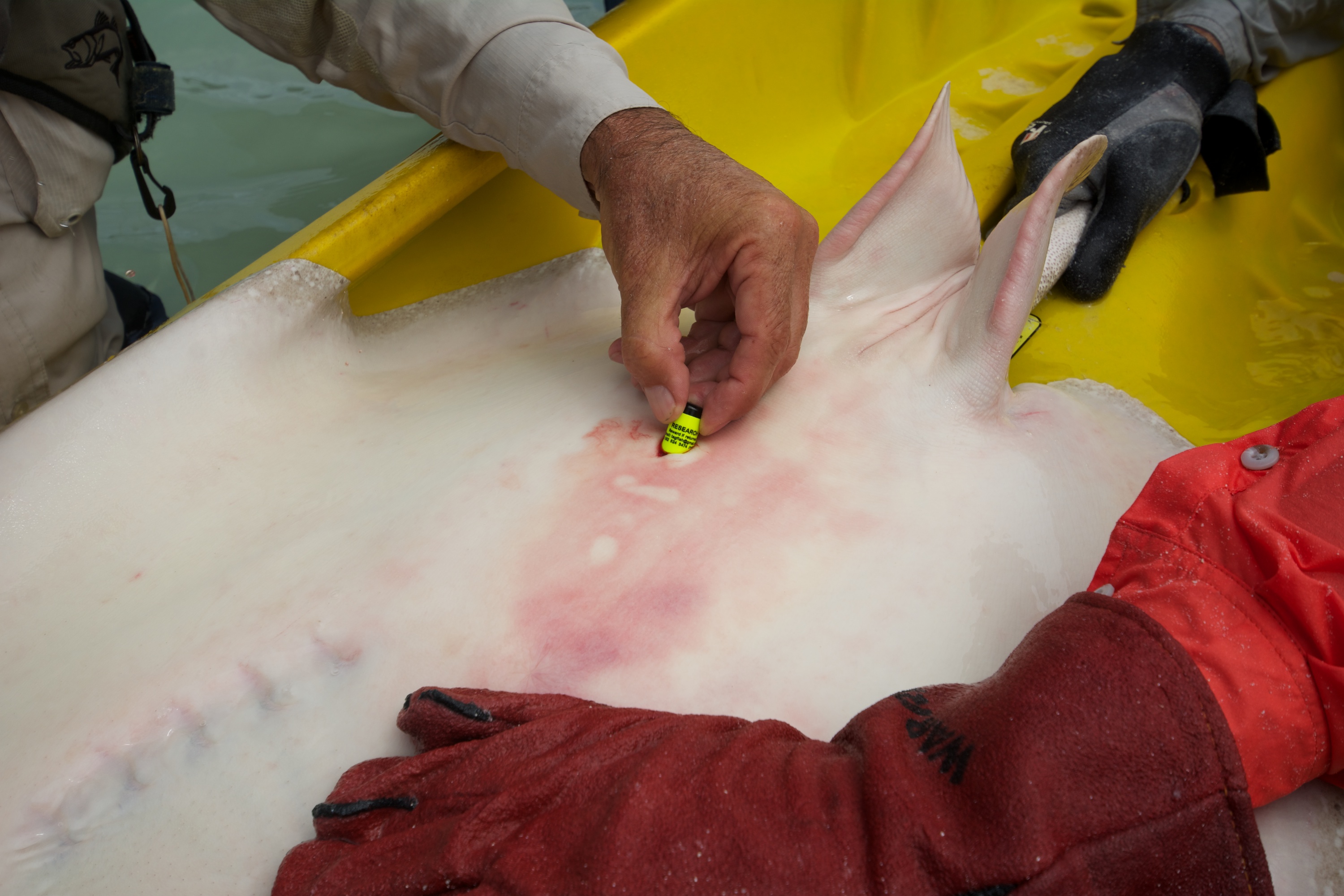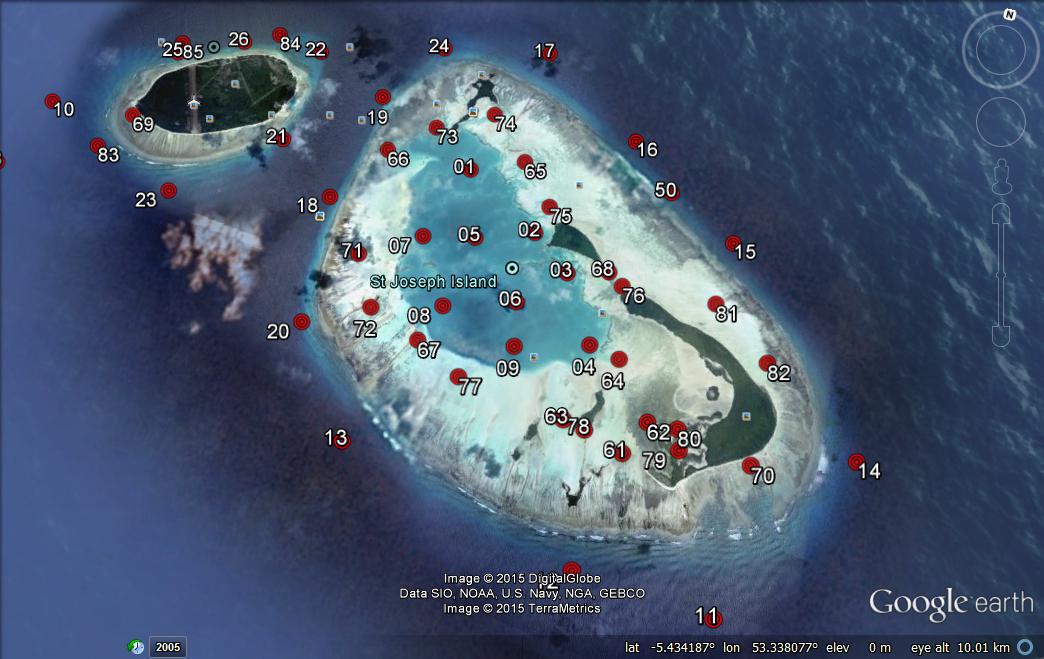Becoming the ‘Big Brother’ to stingrays
How do stingrays live their lives? Do they have a ‘home’ or are they eternal wanderers? Are they active during the day or at night? Do different species like spending time together or do they avoid each other? And probably the most difficult of all – how do you find the answers to these questions?
I wish we could turn the isolated St Joseph Atoll into the ‘Big Brother’ house, setting up cameras throughout the atoll to unravel the secrets of how a stingray spends it time. Unfortunately this is not a practical option at all, so we have to settle for the next best monitoring system: passive acoustic telemetry.
Instead of setting up cameras to watch the stingrays, we set up a network of acoustic receivers to listen to them. The only other thing we need are the transmitters. These are small cylindrical objects that we surgically implant into the stingrays. They send out acoustic signals every couple of seconds and the receivers are constantly listening for these signals. So when a stingray that is equipped with a transmitter swims past a receiver, we know about it. Using this system, we can start to understand how a stingray lives.

An acoustic transmitter is surgically implanted into a stingray. Photo by Rainer von Brandis | Save Our Seas Foundation
The whitish areas are the shallow sand flats and the turquoise area in the middle is the deeper lagoon. (Photo downloaded from Google Earth)
The months of March and April last year saw myself, my supervisors and the rest of my team trudging through the knee-deep water on the sand flats of St Joseph Atoll, on the lookout for stingrays. Our long days in the atoll were successful and we managed to catch 30 stingrays – 17 mangrove rays and 13 porcupine rays – and implant the transmitters into them.
My stingray-tagging team wade through St Joseph Atoll looking for stingrays. Photo by Chantel Elston | Save Our Seas Foundation
After our intensive tagging field trip our research turned into a waiting game. A couple of months down the line, our patience paid off. The first download from the receivers took place in November and we could finally see if our modified ‘Big Brother’ system was successful.
And successful it was. In the space of six months more than 200,000 signals were recorded from our tagged stingrays. It’s going to take me quite a while to analyse the data and get some answers, but just a quick glance already reveals some interesting movements. The smallest mangrove ray that we tagged, with a mere 30-cm disc width, completely blew our expectations out the water. We thought these small rays would stick to the shallow sand-flat areas, as there are large sicklefin lemon sharks lurking around in the deeper lagoon waiting to make a meal out of them. However, this little guy was recorded on every receiver located in the deeper lagoon (receivers 1 – 9 on the map). Whether this is normal behaviour, I can’t say; we didn’t have any signals picked up in the lagoon for the other little rays we tagged. Perhaps this individual is just stupid or really brave; or maybe all of them adventure out into the lagoon and their signals weren’t picked up. We’ll just have to stay tuned to Big Brother and see what happens in the next data download.

.jpg)
